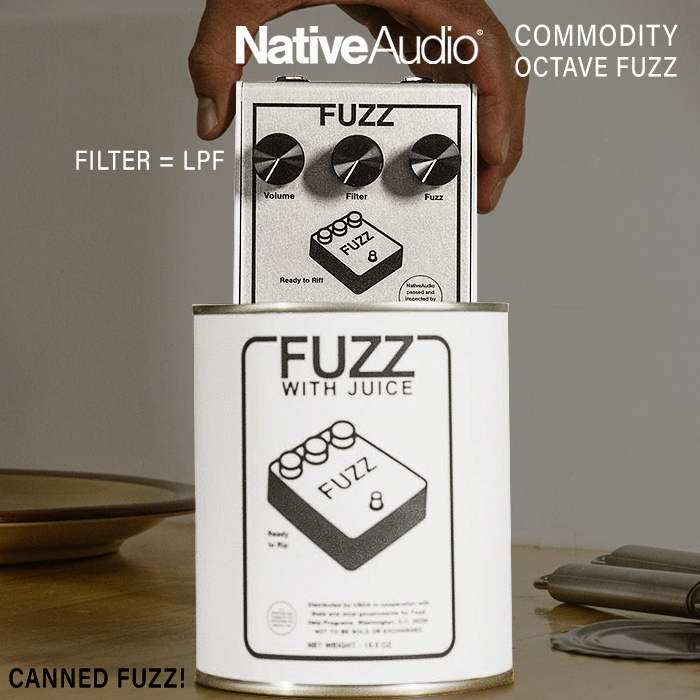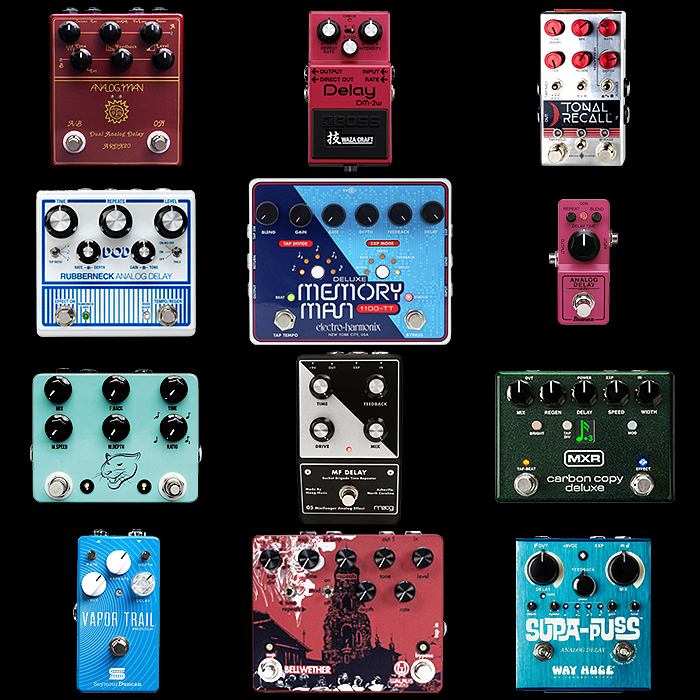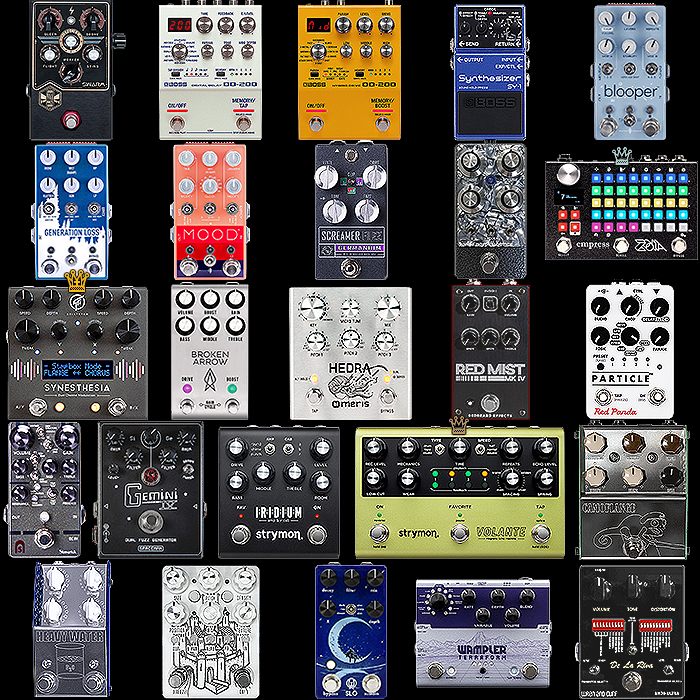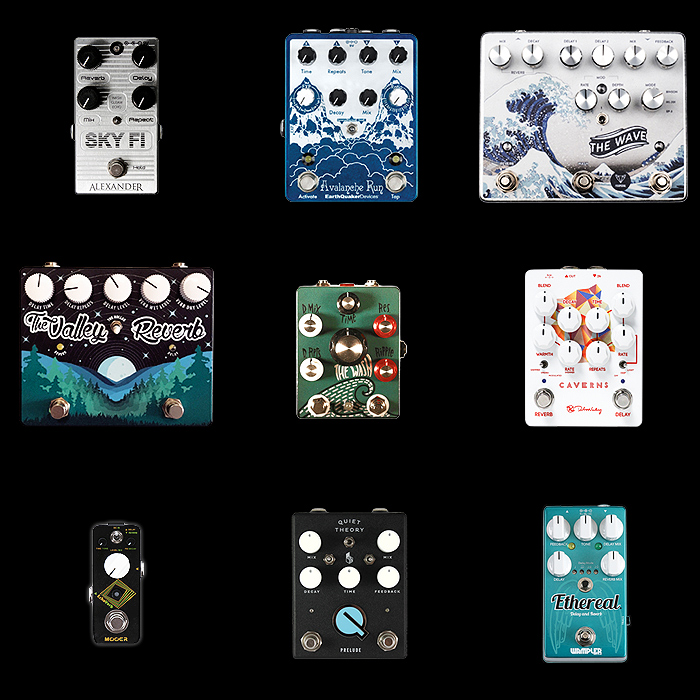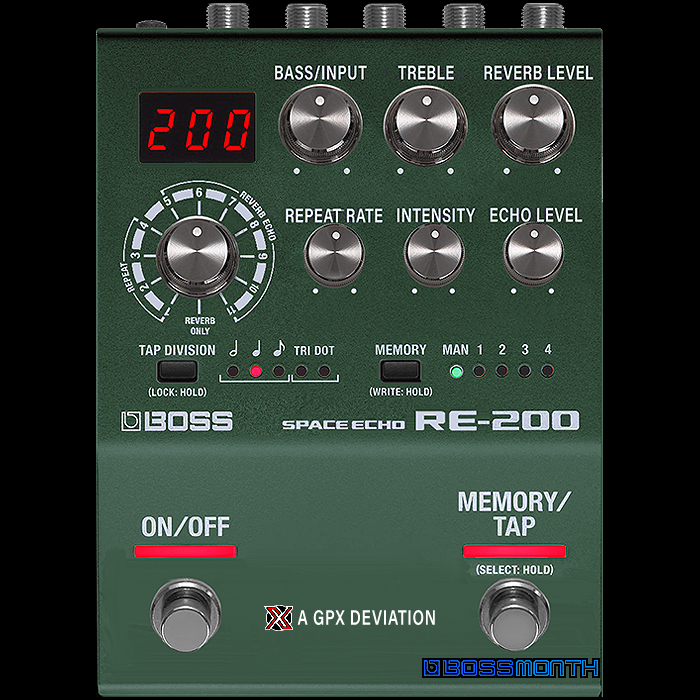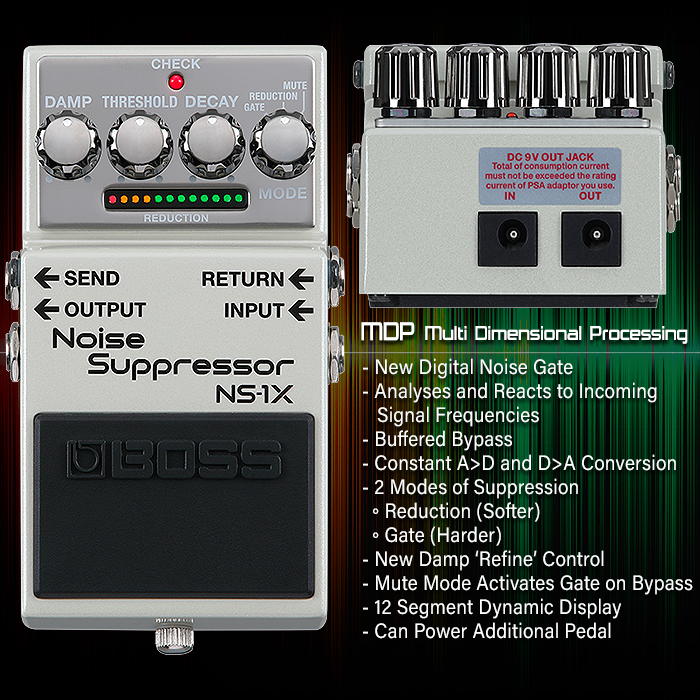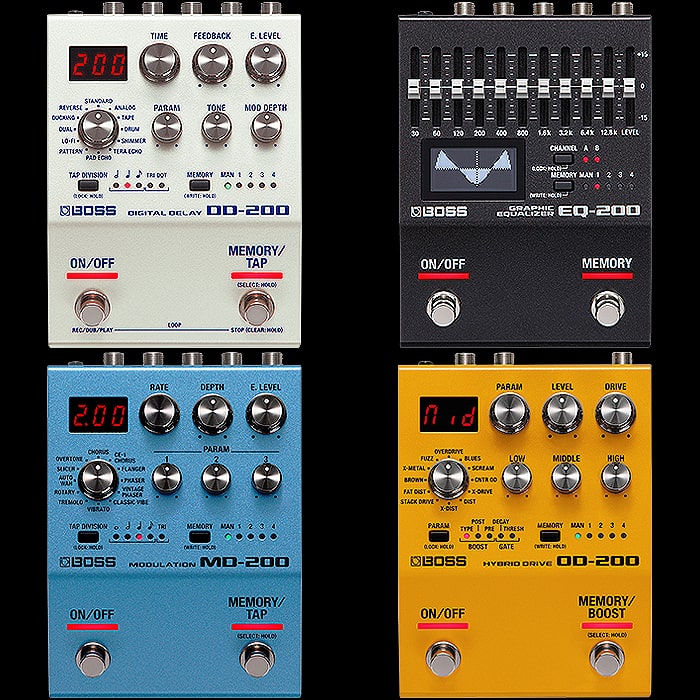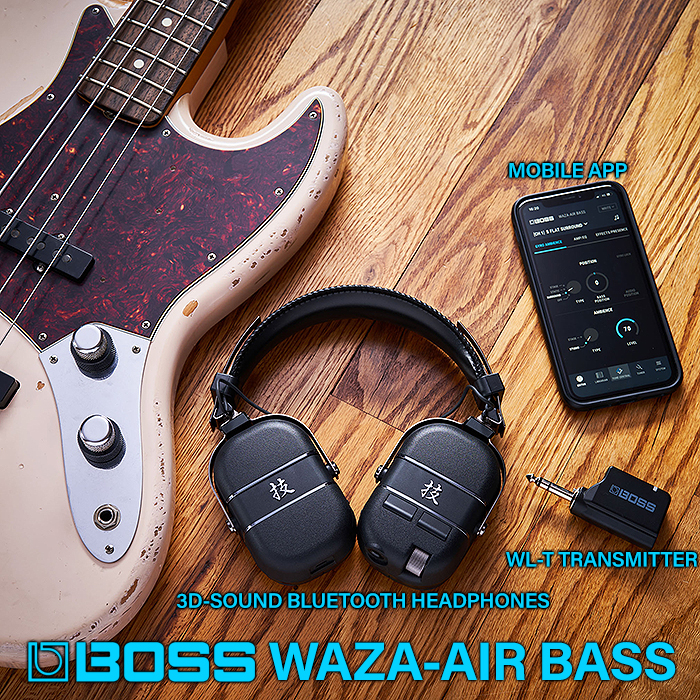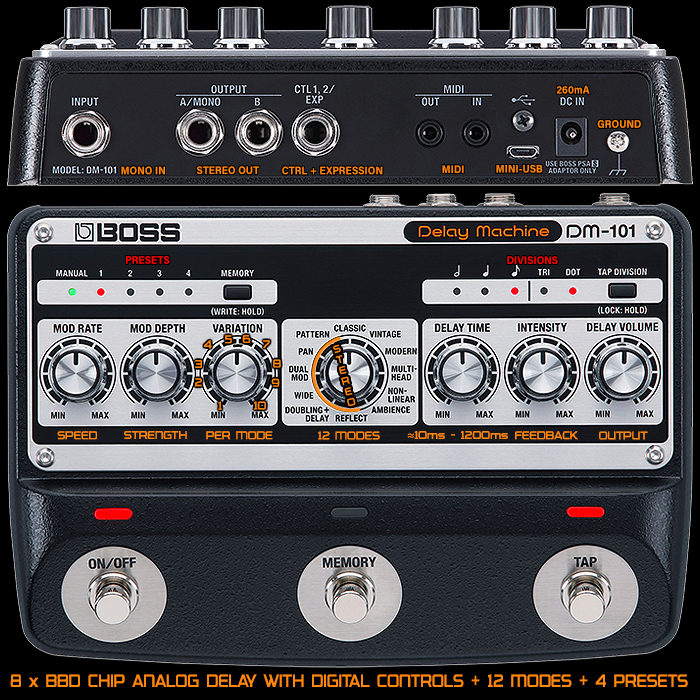Boss DD-200 Digital Delay Workstation vs Source Audio Nemesis Digital Delay Workstation

I’ve come across a lot of queries about these two on various message boards and pedal groups, while no one yet seems to have taken it upon themselves to do a proper detailed head-to-head comparison. I myself had to do this same due diligence a while back - so I thought I would put that process into pictures and words so that it might help others who are having the same deliberation.
These are the only two in their category which share the same sort of footprint - and they’re actual ideal head-to-head competitors as they have largely identical topologies and functionalities. There are of course some difference too - and I will try and weigh each of those up on relative merit in as objective a fashion as possible.
I always seek out the very best pedals for my own preferences, and I’m generally a big fan of both Boss and Source Audio. I obviously have a lot more Boss pedals in my collection versus my single Source Audio Ventris Reverb Workstation - yet I have an appreciation for all great pedals and really love my Ventris - even though that has been recently rotated out in favour of the new EHX Oceans 12. Timing and form factor are of course critical proponents in all of this - and you can only make the best decisions based on what is available at any given time.
In any case we will start out by plotting the inherent similarities between these two pedals, before we focus on the differences. Note that even though a lot of the Controls and Modes/Algorithms are largely synonymous - they’re not always wholly equivalent - so there is a very fine degree of artistic licence in some of the adjacent categories here!
Core Control Topologies - Key Similarities
Overall we can immediately see that there are very significant similarities in these two pedals - they have largely the same amount of controls with the same sort of functions - as follows:
- A : Time Control Knob - common to both
- B : Feedback / Repeats - common to both
- C : E. Level (DD-200) vs Mix (Nemesis) - very slightly different controls but have largely the same impact - in terms of less or more prominence of the effected signal
- D : 12 Mode Rotary Selector - common to both
- E : Param (DD-200) vs Intensity (Nemesis) - same function, different labels - these knobs control specific parameter/s per Mode / Algorithm
- G : Modulation Depth / Modulation - common to both
- H : Tap Divisions - common to both - while the Boss delivers a slightly more intuitive and visible variety
- I : Memory / Preset Controls - common to both
- J : ON/OFF Footswitch - common to both
- K : Tap Tempo Footswitch - common to both - although DD-200 has press+hold function to make presets fully footswitchable
Core Control Topologies - Differences
The main difference is that the Nemesis has LED indicators for each of its modes, while the DD-200 has a Small LED Display Screen. The DD-200 Screen largely displays the Delay Time either in Milliseconds or BPM which is incredibly useful - particularly if you follow Bjørn Riis / Gilmourish - as he always quotes his delay times in milliseconds.
I generally find the Boss's 200 series display screens super useful - while they could really do with being a fraction larger and with slightly higher resolution - so they don't need to use quite so many abbreviations.
Two of the knobs in these topologies - labelled F and L in my visual have distinct functions per each pedal - as follows:
- F : Tone (DD-200) - only the DD-200 has this useful Tone-shaping control to make the repeats Darker or Brighter
- L : Rate - only on the Nemesis - for the DD-200 Rate is solely set by the Tap Tempo footswitch
Overall I find the placement and use of the DD-200 controls very slightly more intuitive - and I would rather have the Tone control of the DD-200 vs the Rate control of the Nemesis. The Screen is quite a big thing too really - and much preferable to the indicator LEDs on the Nemesis Modes - the ability to easily see and dial in either millisecond or BPM Delay Time values is essential if you're trying to recreate David Gilmour or The Edge for instance. (Of course you have access to settings via the Apps for each pedal, but I'm really meaning direct hands-on control here)
In terms of the actual enclosure format - both these pedals have similar surface area while their actual pedalboard footprint is pretty much the same really - but I have a definite preference for the topology and overall arrangement of the OD-200 - for me the ability to instantly change presets via footswitch is also a genuine advantage - there just need to be more footswitchable Presets onboard really! So the first win for me goes to the DD-200.
Core Modes / Algorithms - Similarities
I've already stated that not all the indicated equivalents are necessarily totally 100% matches - but they really are near as darnit pretty much interchangeable. I have identified that in general 7 of the modes match up across the DD-200 and Nemesis, as follows :
- 01 : Standard (DD-200) / Digital (Nemesis) - Different labels, but same 'Digital' standard flavour - common to both
- 02 : Analog - common to both
- 03 : Tape - common to both
- 05 : Shimmer (DD-200) / Shifter (Nemesis) - both Pitch-Shifted Delays as such with some differences, but same sort of effect - hence common to both
- 08 : Pattern (DD-200) / Rhythmic (Nemesis) - not exactly the same - but both really are Pattern-type delays, hence common to both
- 09 : Lo-Fi (DD-200) / Degrade (Nemesis) - Different labels but same sort of effect really - common to both
- 12 : Reverse - common to both
Core Modes / Algorithms - Differences
Each of these devices has 5 distinct Delay Modes - as follows :
Boss DD-200
- 4 : Drum - Binson Echorec style Delay
- 6 : Tera Echo - Spacious animated ambience effect - a very unique sounding cascading ambient Delay + Reverb effect
- 7 : Pad Echo - Drifting smeared delay trails
- 10 : Dual - Two different simultaneous delay lines with the Param knob controlling the Time of the second path
- 11 : Ducking - Classic ducking effect delay
Nemesis
- 13 : Slapback - Short single repeat echo
- 14 : Diffuse - Very soft attack / smeared delays which produce super smooth repeats
- 15 : Noise Tape - Darker more degraded sounding Tape Delay
- 16 : Helix - Reverse Delay with Octaver - a slightly different type of Shifter / Shimmer
- 17 : Sweeper - Resonant Low Pass Filter - Synth-Like Effect
Of course - via Nemesis' Neuro App you can access 12/14 further Delay Algorithms - which you can switch out the defaults for - these include Tremolo, Dub, Chorus, Flanger and Oil Can along with other variations.
On the basis of defaults though I feel that DD-200's Tera Echo and Pad Echo are almost worth the price of admission alone, and I would say Drum, Dual and Ducking are typically more useful than the alternative defaults of the Nemesis.
For the Nemesis' distinct flavours - Slapback you can easily achieve on the DD-200 with most of its modes (just adjust Time and Feedback appropriately), Noise Tape is to a degree covered by the 'Distortion' element that you can bring into play on the DD-200's Tape via the Param control - you can also Darken the Tape Mode via DD-200's Tone control. And the Helix and Sweeper aren't sufficiently interesting for me - particularly if you try to weigh them up against DD-200's Tera and Pad Echos. In fact the only one of the Nemesis' distinct default algorithms that has high validity is the rather cool Diffuse variety. Had I been Source Audio I would have changed out some of its defaults for say Dub, Oil Can and Tremolo - which are far more interesting textures for me.
Generally though and overall I think the Boss DD-200 wins it on its specific selection and mix of 12 Modes / Algorithms - each of those is a strong choice and valid on its own merits - and the Tera and Pad Echos are really stellar - so even with Nemesis' 24/26 overall algorithms - I would still come down in favour of the Boss. In fact I would argue that a large number of Nemesis users have never and have no wish to start changing out their default Mode algorithms - so it's what's on top that counts!
I've noted before how important the choice and mix of algorithms is for the validity of a particular device - and how Brian Wampler got it pretty much spot on for his Teraform vs Boss's MD-200 - where Boss chose to leave out the Dimension C/D and Harmonic Tremolo. For the DD-200 Boss has included its essential Tera Echo algorithm - which is one of the flavours I was actively seeking - and it's thrown down another ace courtesy of that superb new Pad Echo flavour.
Final Tallies and Overall Outcomes!
Both of these are superbly capable devices with truly great functionality, feature sets, usability and outputs - and they come in highly practical and actually very similar formats.
I've already noted that I prefer the Control Topology and overall Usability of the DD-200, and that I feel it has the better mix of Modes / Algorithms. The Nemesis obviously has the more capable Neuro App and access to 12/14 further algorithms with more scope for Algorithm tweakability and replacement which many really rate, while I prefer for everything to be fully surfaced, instantly accessible and wholly tweakable on the actual device itself.
Both these do sound amazing, while some players have complained of some incidental hints of sibilance / very slight unwanted noise on the Nemesis - so depending on the sensitivity of your ears it may annoy some, while most will not likely particularly notice it.
Boss quotes 32-bit AD/DA, 32-bit floating point processing, and 96 kHz sampling rate versus Source Audio's 56-Bit signal path and 24-bit delay line processing.
Pricing-wise you can get the DD-200 for as little as £190 vs £260 for the Nemesis - based on current pricing and offers.
For a long time I was considering adding the Nemesis to complete the pairing with the Ventris I already had. I had always wanted the Boss Tera Echo effect though - so when the DD-200 came along I would have snapped that up almost solely on the basis that it just contained the Tera Echo. The fact that it comes also with so many great algorithms - and that amazing new Pad Echo - means that the Boss DD-200 was always going to have a certain advantage. I try to be fully pragmatic and objective though - and on the basis of this analysis across all the key criteria that matter to me - the Boss DD-200 is my clear winner. The Nemesis is its equivalent in most aspects and those that have one shouldn't feel post-purchase dissonance in the slightest - as it's a great delay workstation too with several of its own advantages. However if you are setting out to buy one of these today I would think for most players the Boss would be slightly more preferable! By all means weigh up the evidence yourselves and draw your own conclusions!
Interestingly for me the Boss DD-200 is the most perfect execution of the recent Boss 200 series, it has that perfect mix of the right algorithms, feature set and functionality. The EQ-200 is also very decent but not quite as impressive as the DD-200, while the MD-200, OD-200 and RC-10R all have some flaws for me. Considering how stellar the DD-200 and EQ-200 turned out it's a bit of a shame the others aren't quite up to that standard. The OD-200 and RC-10R need just a couple of tweaks really, while the MD-200 needs more significant work in the area of intuitiveness and correct mix of algorithms - in my opinion it cannot quite compete shoulder-to-shoulder with its own immediate competitors - the GFI System Synesthesia and Wampler Terraform.
















